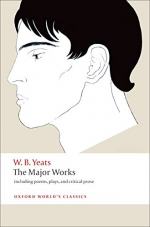|
This section contains 773 words (approx. 3 pages at 300 words per page) |

|
SOURCE: "Yeats's The Second Coming'," in The Explicator, Vol. 50, No. 4, Summer, 1992, pp. 224-5.
In the following essay, Raghu addresses Edward Proffitt's 1991 explication of "The Second Coming." Raghu argues that the "rough beast" of the poem is a mental image or vision, and that the final lines of the poem should not be read literally.
Edward Proffitt's very original thesis, that the rough beast mentioned in the penultimate line of Yeats's "The Second Coming" is the offspring of the sphinx-like creature of lines 13-17, which was propounded in his note on the poem (Explicator 49.3, spring 1991), definitely makes sense but does not seem to be as wholly satisfying as he claims it to be.
If one accepts the postulate of Geza Roheim, cited by Proffitt, that 'The Sphinx .. . is the father and mother in one person,"1 one has necessarily to reject Proffitt's thesis, as it is only the mother who...
|
This section contains 773 words (approx. 3 pages at 300 words per page) |

|


